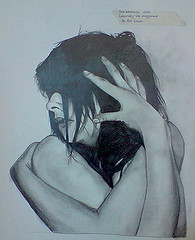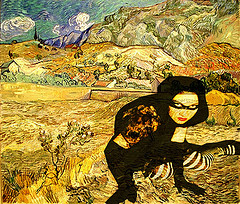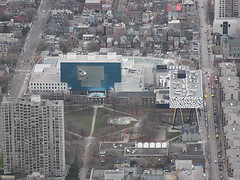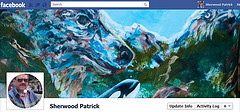by Manuel Marino | Arts
Reductive Art – The Concept Reductive Art is not a distinct genre, but rather a collective term for various modern art styles that share similar underlying principles. The essence of Reductive Art lies in its simplistic designs, emphasizing clarity over obscurity, simple forms over complex patterns, and straightforward color schemes instead of fantastical palettes. This approach emerged in America around the late 1950s as a rebellion against existing art movements and eventually evolved as a response by contemporary artists to the idealism of the 1960s. Consequently, the role of themes or subjects took a backseat, and the importance of the ‘concept’ was highlighted.
The Correlations Reductive Art encompasses various modern art styles and alternative names, such as ABC art, Color Field, Minimalistic art, Cool art, Rejective art, Geometrical Abstraction, and Anti-illusion art. Thus, Reductive Art is a pluralistic approach that finds expression in diverse styles and techniques.
The Details Precision and asymmetry characterize Reductive Art. Geometrical Abstraction typically features continuous forms and limited (or primary) colors. The idea (concept) behind a specific pattern becomes the driving force for these works, making Reductive Art independent of historical, social, political, religious, or mythological influences for subject matter. It is … ...Read the rest.
“Western Art – Reductive Art – Creatively Simple”
by Manuel Marino | Arts, Games, People
 Mr. Yap is the genius mind behind Elven Legends Rise of the Nightshade, developed by his company Nexgen Studio.
Mr. Yap is the genius mind behind Elven Legends Rise of the Nightshade, developed by his company Nexgen Studio.
1) Dear Alvin, we know that Elven Legends has been published in the past, what can you tell us about that release?
Elven Legends won several accolades in the past for being too advance in its time. It was on JAVA phones, now we are bringing it back to life on iPad and tablets etc. using UDK to develop it.
2) So, Elven Legends has been resurrected, what exactly means this?
This means part two of the game product. Basically we are creating a side story line to the world of Elven Legends, focusing on the species created by the Dark Elves during the first Elven civil war – Nightshades.
 3) Why this new edition will be an impressive edition for all fantasy games enthusiasts?
3) Why this new edition will be an impressive edition for all fantasy games enthusiasts?
It will focus on a new ‘spell’ system and allow users to really affect environments and enemy units to creatively get out of tricky situations.
4) Are you planning right now more quests, battles, items and expansions to be added in the future?
Right now we are in the pre-production stage. Conceptualizing, talking to … ...Read the rest.
“Elven Legends Rise of the Nightshade”
by Manuel Marino | Arts
Plop Art – The Concept Plop Art is an unfavorable term used to describe Public Art from various genres, such as Abstraction, Modernism, or Contemporary Artworks, predominantly sculptures, placed in front of workplace buildings, business plazas, parks, and other public venues. These Plop Artworks were not widely appreciated by the general public, as they were often perceived as unattractive or unsuitable for their installation locations and surrounding environments.
Plop Art – The History The sculpture ‘La Grande Vitesse’ by Alexander Calder (American, 1898-1976), installed in Grand Rapids, Michigan, in 1966, is regarded as a turning point in art history Western Art - Known Western Artists & Paintings - The Mona Lisa. (Photo credit: Wikipedia) Art is highly subjective, and while the following list may not be exhaustive or completely comprehensive, it can serve as a fun way to learn more about familiar artists and discover new ones you may not have known about before. Michelangelo was an Italian… . It received a positive response and had a significant impact on the city’s urban renewal process. Amidst the mixed reactions of criticism and appreciation, this artwork led to the emergence of the controversial … ...Read the rest.
“Western Art – Plop Art – The Pejorative Form of Art”
by Manuel Marino | Arts
Environmental art refers to any form of artistic expression that addresses ecological issues or incorporates elements from the natural world. Originating in the late 1960s as a movement associated with sculpture, land art, and site-specific installations, environmental art encompasses various media and extends beyond the use of soil alone. Also known as sustainable or green art, this genre aims to increase understanding and raise awareness of modern environmental challenges.
In 1969, artist Robert Smithson created a piece called Spiral Jetty, which inadvertently raised awareness about recycling as he caused damage to the site during its construction. By using a bulldozer to shape the land for his art, he inadvertently harmed a nearby lake. In contrast, Richard Long, another environmental artist, utilizes natural materials found on-site for his creations, ensuring no negative impact on the environment.
Eco art, a term synonymous with environmental art, seeks to bring attention to environmental issues by using natural media and creating artworks in natural settings. One of the most well-known eco art projects was Joseph Beuys’ 7000 Oaks, in which Beuys and his team planted 7,000 oak trees in Kassel in 1982 to highlight the declining environment and the need for natural beauty. Other notable … ...Read the rest.
“Eco Art and Environmental Art Subjects”
by Manuel Marino | Arts
Recycled art refers to art created with reclaimed materials incorporated into the piece, while found art involves modifying or creating art from undisguised objects that are not typically considered art due to their functional nature.
Both recycled and found art are becoming increasingly popular among artists as a means to raise awareness about reusing and recycling unwanted or no longer needed items. Artists often use objects like broken saw blades, old sinks, and other items to create art. Found art was first defined by Marcel Duchamp in 1915 when he used the term “readymade” to describe his art creation, Bicycle Wheel, made in 1913. Another example of Duchamp’s work includes a fountain made from an old urinal, which he signed as “R. Mutt.”
When an artist combines various objects into found or recycled art, it is called an assemblage. Duchamp’s piece, “Why Not Sneeze Rose Selavy?” is an example of an assemblage, made from a thermometer, cuttlebone, birdcage, and marbles that resembled sugar cubes. In 1936, during the Surrealist Exhibition of Objects, several sub-classifications of found and recycled art were established. Picasso incorporated found art objects in his piece, “Baboon and Young,” using handlebars and a bicycle … ...Read the rest.
“Recycled Art and Found Art Styles”
by Manuel Marino | Arts
The painting processes analyzed in this study aim to investigate the artist’s identity through an exploration of self-awareness. The basic elements of what, where, when, how, and why they occur are described in the following applications, which form a personal narrative.
These processes have been chosen over other media due to the immediacy and fluidity of paint’s response. Despite a background in ceramics, my passion lies in art painting.
Processes
Composition of Art Paintings In my exploration, I will create six art paintings, including abstract and figurative works. I will use various surfaces, and the paintings may feature professionally stretched canvases with concrete underlay (thick black plastic).
Each painting will have uniform dimensions: 120 x 70 x 5 cm. The media used may include oil paint, enamel, oil sticks, Black Japan stain, shellac, pastel, charcoal, and ink. The primary creative focus in this process will lie in the use of alternative elements in painting and the employment of different surfaces. Boundaries will be intentionally imposed by using construction materials to create aesthetics on surfaces not intended for this purpose.
Timing of Paintings The proposed schedule involves painting every second Tuesday and every Thursday for a period of six … ...Read the rest.
“Art Paintings – Exploring the Artist Identity”


 Manuel is a passionate, driven, and techsavvy AV technician,
Manuel is a passionate, driven, and techsavvy AV technician, 
 Mr. Yap is the genius mind behind
Mr. Yap is the genius mind behind  3) Why this new edition will be an impressive edition for all fantasy games enthusiasts?
3) Why this new edition will be an impressive edition for all fantasy games enthusiasts?



Recent Comments